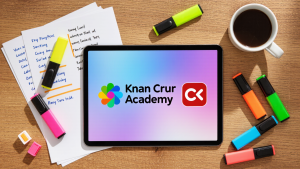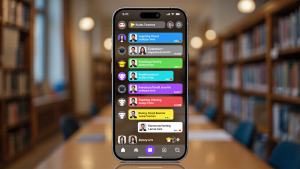Introduction
If you have the drive to learn any new skill for free, you must first unlearn the myth that high-quality education requires a credit card. I remember back in 2018, I decided I wanted to learn graphic design. I felt overwhelmed by the sheer amount of information online, so I did what most people do: I paid $199 for a “Masterclass” that promised to make me a pro in 30 days.
Guess what happened? I watched the first three videos, got bored, and never logged in again. Six months later, I actually learned design by watching YouTube tutorials and replicating posters I liked—for zero dollars.
We live in the golden age of information. The barrier to entry for learning coding, marketing, languages, or even rocket science has never been lower. Yet, the e-learning industry is projected to reach over $370 billion by 2026 because they sell us something elusive: “Structure” and “Motivation.” We pay because we think if we spend money, we will take it seriously. But usually, we don’t.
In this deep-dive guide, I am going to show you how to hack your own education. I will share the exact syllabus-building strategy I use to learn any new skill for free, locate hidden university-level resources, and actually stick to your goals without spending a cent.
1. The “Syllabus Hacking” Method
The biggest reason people buy courses isn’t the information; it’s the order of the information. When you try to self-learn, you often don’t know where to start. You search “How to code,” get 10 million results, and give up.
Here is my secret weapon: Steal the Syllabus.
You don’t need to buy a $100 course on Udemy or Coursera to see what they teach. Go to those sites, find the best-selling course in your topic, and scroll down to the “Curriculum” or “Syllabus” section. This list of modules is your roadmap.

For example, if you want to learn Photography, a paid course might list:
-
Understanding ISO
-
The Rule of Thirds
-
Editing in Lightroom
Copy that list. Now, instead of searching for “Photography,” search for “Understanding ISO” on YouTube. You will find hundreds of passionate creators explaining that specific concept better than a paid instructor might. By structuring your own path using their table of contents, you can successfully learn any new skill for free without the confusion.
2. The Hidden Gem: Auditing University Courses
Did you know you can take classes from Harvard, MIT, and Stanford without paying tuition? Most people don’t know this because the platforms hide the option.
Sites like Coursera and edX host courses from the world’s top universities. When you click “Enroll,” they will aggressively ask you to pay $49 or $99 for a certificate. But if you look closely (usually a small text link at the bottom or a pop-up option), there is an option to “Audit this Course.”
Auditing means you get access to all the video lectures, reading materials, and sometimes even the quizzes—completely free. You just don’t get the piece of paper at the end. Additionally, MIT OpenCourseWare publishes virtually all of their course content online for free. In 2025, employers care about your portfolio and skills, not a certificate from an online site. Using the “Audit” feature is the smartest way to learn any new skill for free at an Ivy League level.
3. The Ultimate Toolkit to Learn Any New Skill for Free
Beyond video lectures, the internet is full of specialized, high-quality platforms that are entirely free. Here are the ones I personally use and recommend:
-
Khan Academy: Essential for math, science, and economics. Their gamified system and mastery points are arguably better than most high school textbooks.
-
Anki: If you are learning a language or medical terms, forget expensive software. Anki uses “Spaced Repetition” technology to help you memorize vocabulary 10x faster.
-
FreeCodeCamp: If you want to learn web development, this is widely considered better than many paid bootcamps. It’s interactive, project-based, and has a massive community.
-
Project Gutenberg: Need to read the classics or research history? This site offers over 70,000 free eBooks that are in the public domain.

4. Project-Based Learning vs. Passive Watching
This is where most self-learners fail. They fall into the trap of “Tutorial Hell.” This is when you watch 10 hours of video tutorials and feel like you are learning, but the moment you open a blank project, you freeze.
You cannot learn to swim by watching videos of Michael Phelps. You have to get in the water. If you are learning Excel, don’t just watch a video about formulas. Create a budget spreadsheet for your home expenses. If you are learning to write, start a WordPress blog.
Apply the “10/90 Rule”: Spend 10% of your time consuming content (reading/watching) and 90% of your time creating content (doing/practicing). This active engagement forces your brain to retain information through a process called Active Recall, ensuring you learn any new skill for free and actually keep it.
5. Find Your Digital Tribe
The hardest part of learning alone is the isolation. When you pay for a university degree, you are paying for the network of classmates. But you can build this for free, too.
-
Reddit: Subreddits like r/learnprogramming or r/languagelearning are goldmines. You can ask questions, share resources, and vent about frustrations.
-
Discord: Almost every niche interest has a Discord server now. Find one, join it, and participate.
-
#StudyGram: Instagram and TikTok have massive communities of people who just post about their study progress. It sounds silly, but seeing others work hard can be incredibly motivating.

6. The 20-Hour Rule
We often think it takes 10,000 hours to master a skill (based on Malcolm Gladwell’s famous book Outliers). While that might be true to become a world-class expert, it is discouraging for beginners.
Author Josh Kaufman suggests a different approach in his TED Talk: The 20-Hour Rule. He argues that you can go from “knowing nothing” to “being reasonably good” in just 20 hours of focused, deliberate practice. That is 45 minutes a day for about a month.
When you start, you will suck. That is the “frustration barrier.” But if you push through those first 20 hours, you will see a massive spike in competence. Commit to just 20 hours before you decide to quit or pay for help.
Frequently Asked Questions (FAQs)
Q: Can I really get a job without paid certifications? A: Yes. In fields like tech, design, writing, and marketing, your portfolio matters more than your degree. If you can show a potential employer a website you built or a campaign you ran, they won’t care if you learned it from YouTube or Harvard.
Q: How do I stay disciplined without a teacher? A: Use the “Seinfeld Strategy.” Get a physical calendar and mark a big red “X” every day you spend at least 30 minutes learning. Your only goal is: Don’t break the chain.
Q: Are paid courses ever worth it? A: Sometimes. If you are at an advanced level and need very specific, niche industry knowledge, a paid course might be faster. But for beginners and intermediates, free resources are usually sufficient to learn any new skill for free.
Q: What if I get stuck and have no one to ask? A: This is a vital skill called “Google-fu.” Learning how to phrase your problem into a search engine (or asking AI tools like ChatGPT) is part of the learning process. Every problem you face has likely been solved by someone else on a forum like Stack Overflow or Reddit.
Conclusion
The gatekeepers are gone. Knowledge is no longer locked behind ivory towers or expensive paywalls. With the right mindset, a hacked syllabus, and a bit of discipline, you can master anything from coding to cooking. So put away your wallet, open a new browser tab, and start your journey to learn any new skill for free today.

